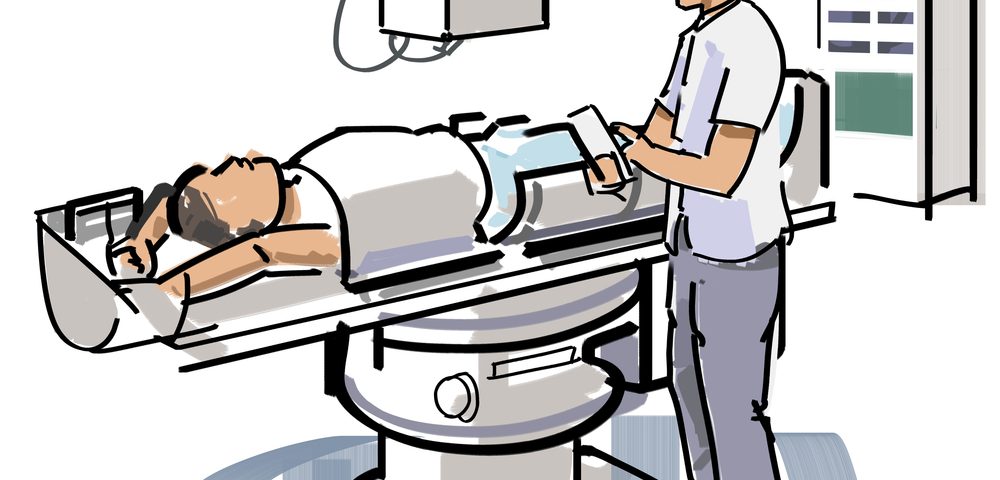Men newly diagnosed with low- or intermediate-risk prostate cancer may benefit more by being treated with high-dose stereotactic body radiotherapy (SBRT) as a first therapy than with other available radiotherapies, according to the results of a large and multi-center clinical trial.
The data, recently announced at the 58th Annual Meeting of the American Society for Radiation Oncology (ASTRO) in a presentation titled “Five-Year Outcomes from a Multi-Center Trial of Stereotactic Body Radiotherapy for Low- and Intermediate-Risk Prostate Cancer,” revealed that SBRT has shorter treatment duration, lower severe toxicity, and excellent cancer control rates.
Usually, prostate tumors respond well to radiation therapy, but the possibility of radiation exposure to healthy tissue of the gastrointestinal (GI) and genitourinary (GU) tracts is a matter of concern to physicians. SBRT is an advanced technique designed to deliver high doses of radiation therapy to the tumor in few fractioned radiation treatments (usually up to five), with a high specificity to the tumor site. A specially designed coordinate-system is used to detect the exact localization of the tumors in the body, helping to avoid treating healthy tissue nearby and reducing toxicity to non-cancerous cells.
Given its focused radiation delivery, this technique is now a standard of care for many patients with non-surgical lung cancer, working to prevent unnecessary radiation exposure to the heart and surrounding lung tissue. In prostate cancer patients, similarly, it can be used to avoid exposure to the adjacent bladder, rectum, and sex organs, the researchers reported.
Previous studies have suggested that SBRT as a primary therapy for prostate cancer is a cost-effective and faster alternative to intensity-modulated radiation therapy, another high-precision radiotherapy. But all those studies took place at a single institution. “Our study is the first to contribute multi-center data that support the use of SBRT as front-line therapy for men with prostate cancer,” Robert Meier, MD, its lead author and a radiation oncologist at Swedish Medical Center in Seattle, said in a press release.
In this open-label study (NCT00643994) Meier and his team enrolled 309 newly diagnosed prostate cancer patients from 21 different hospitals across the United States. Among them, 172 were low-risk, and 137 were intermediate-risk.
Patients received SBRT through a non-isocentric robotic platform, which used real-time tracking of implanted fiducials (tiny gold particles implanted in the patients’ tumors that act as localizing and tracking devices). All patients received a 40 Gy radiation therapy in the prostate, divided in five treatment sessions of 8 Gy each, and those with intermediate-risk also received a single dose of 36.25 Gy to their seminal vesicles. Patients were followed for a median of 61 months, during which time no patient received concomitant or adjuvant androgen deprivation therapies.
The study’s primary outcomes included GU and GI toxicities and relapse-free survival (RFS), and overall survival (OS) was measured as a secondary outcome.
Researchers noted that in the five years following SBRT, 95.6% of the participants were still alive, and of those, 97% were free from cancer progression, a percentage higher than that found in historical controls. In fact, the five-year RFS for low- and intermediate-risk patients was 97.3% and 97.1%, respectively.
Fewer serious side effects were also reported in patients treated with SBRT. Only five patients (1.6%) experienced grade three GU toxicities, far below prior 10% rates. No grade four or five toxicities were reported. Among those who experienced less serious side effects, the researchers found the effects were usually temporary. More than half of patients experienced grade one GU or GI toxicities, and nearly a third experienced grade two GU or GI toxicities.
“Our results illustrate how advanced technology has radically improved our ability to target cancer,” said Dr. Meier. “After following patients for more than five years, we found that serious side effects from a brief course of SBRT were uncommon and that cancer control rates were very favorable compared to historical data. Our trial confirms that SBRT may be preferable to other treatment approaches for newly-diagnosed cases of prostate cancer, including more aggressive disease.”

